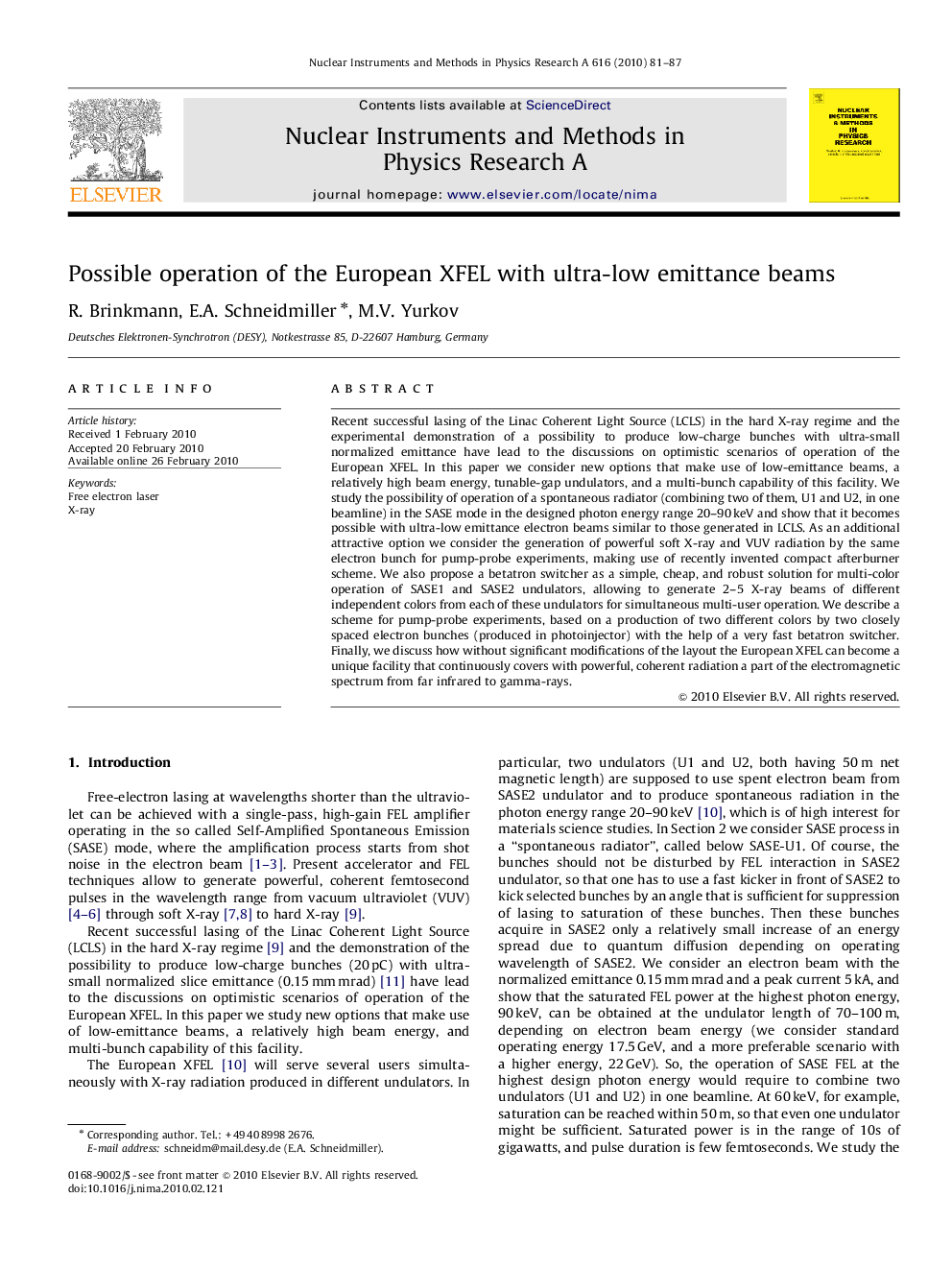| Article ID | Journal | Published Year | Pages | File Type |
|---|---|---|---|---|
| 1826459 | Nuclear Instruments and Methods in Physics Research Section A: Accelerators, Spectrometers, Detectors and Associated Equipment | 2010 | 7 Pages |
Abstract
Recent successful lasing of the Linac Coherent Light Source (LCLS) in the hard X-ray regime and the experimental demonstration of a possibility to produce low-charge bunches with ultra-small normalized emittance have lead to the discussions on optimistic scenarios of operation of the European XFEL. In this paper we consider new options that make use of low-emittance beams, a relatively high beam energy, tunable-gap undulators, and a multi-bunch capability of this facility. We study the possibility of operation of a spontaneous radiator (combining two of them, U1 and U2, in one beamline) in the SASE mode in the designed photon energy range 20-90Â keV and show that it becomes possible with ultra-low emittance electron beams similar to those generated in LCLS. As an additional attractive option we consider the generation of powerful soft X-ray and VUV radiation by the same electron bunch for pump-probe experiments, making use of recently invented compact afterburner scheme. We also propose a betatron switcher as a simple, cheap, and robust solution for multi-color operation of SASE1 and SASE2 undulators, allowing to generate 2-5 X-ray beams of different independent colors from each of these undulators for simultaneous multi-user operation. We describe a scheme for pump-probe experiments, based on a production of two different colors by two closely spaced electron bunches (produced in photoinjector) with the help of a very fast betatron switcher. Finally, we discuss how without significant modifications of the layout the European XFEL can become a unique facility that continuously covers with powerful, coherent radiation a part of the electromagnetic spectrum from far infrared to gamma-rays.
Keywords
Related Topics
Physical Sciences and Engineering
Physics and Astronomy
Instrumentation
Authors
R. Brinkmann, E.A. Schneidmiller, M.V. Yurkov,
